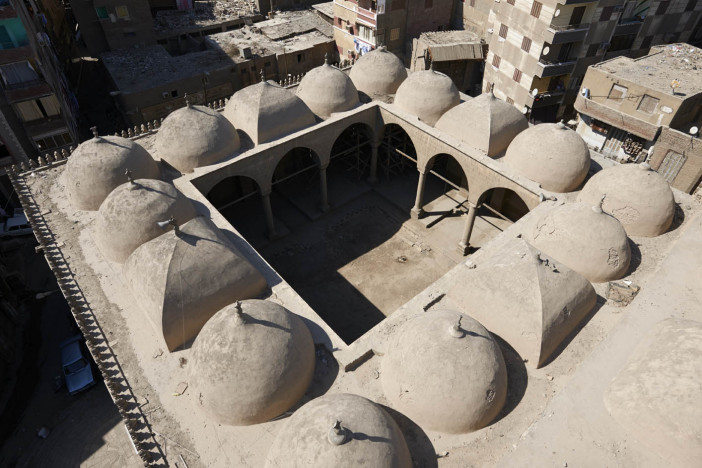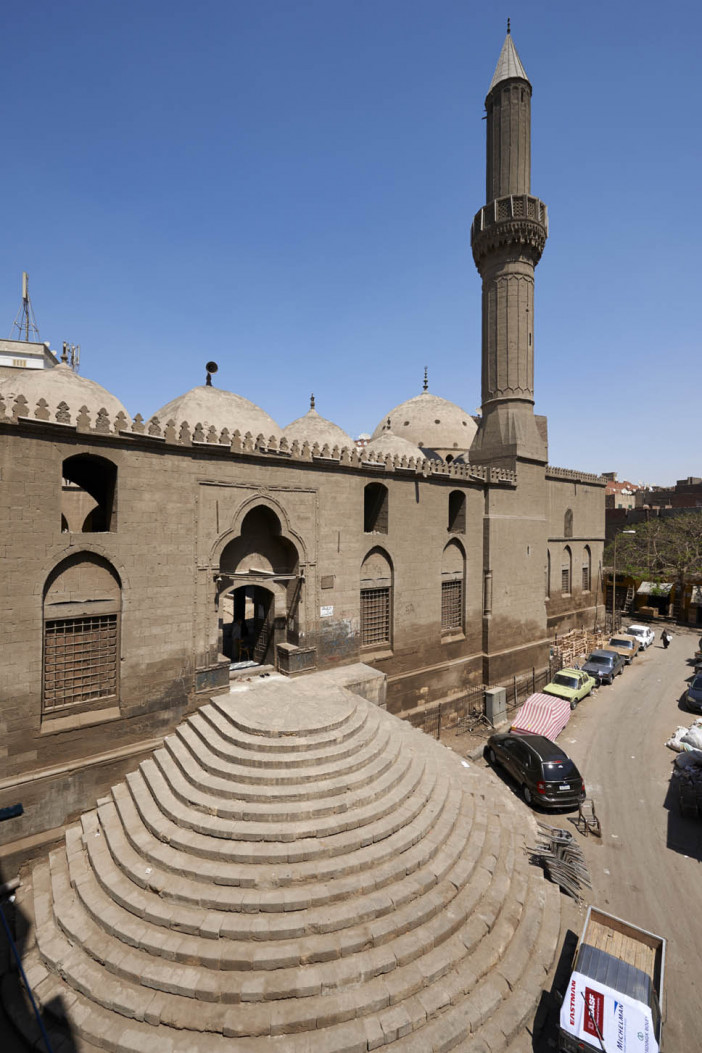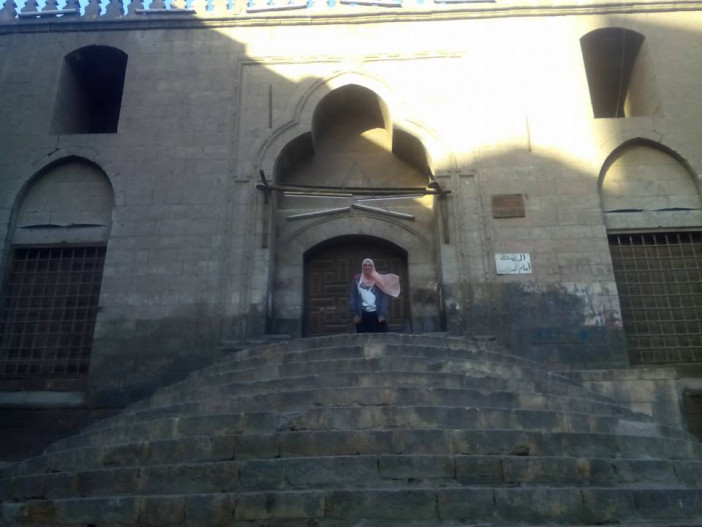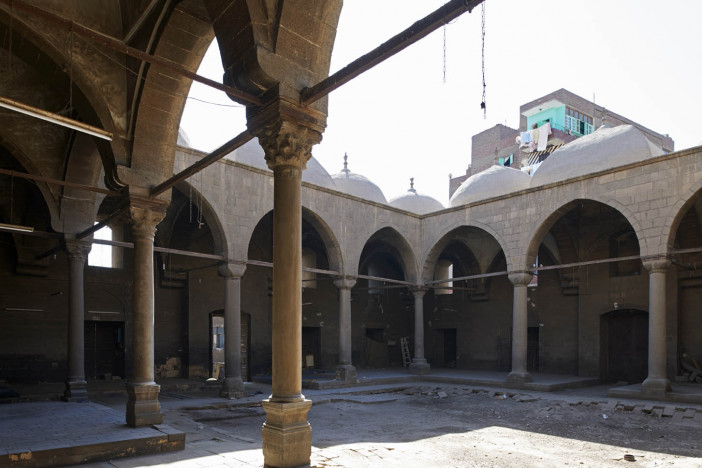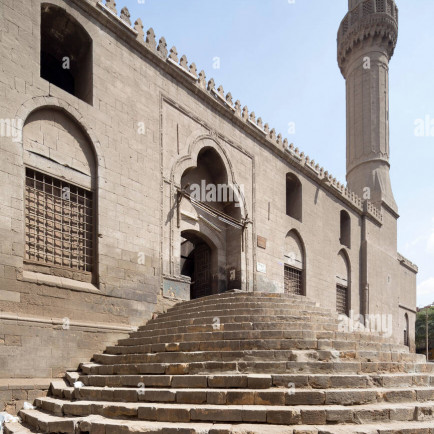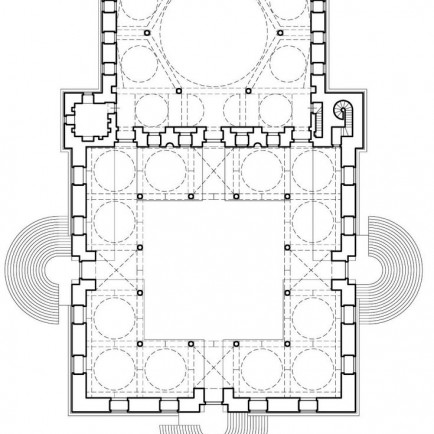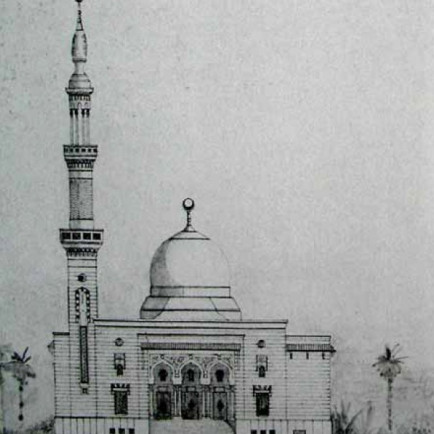Queen Safia mosque
History
Al-Malika Safiyya Mosque takes its name more from ownership than from actual patronage.It was started by 'Uthman Agha, who held the post of the Agha Dar al-Sa'ada, or black eunuch in charge of the harem, as well as the Egyptian waqf estates of the holy places in the Hijaz. 'Uthman Agha was the agent and slave of the noble Venetian beauty Safiya, of the Baffo family, who had been captured by corsairs and presented to the imperial harem, where she became chief consort of Sultan Murad III (1574-95) and virtual regent for her son, Sultan Muhammad III (1595-1603). Uthman died before the mosque was completed, and he went to Safiya in connection with his estate.She endowed the mosque with a deed that provided for thirty-nine custodians including a general supervisor, a preacher, the khatib (orator), two imams, timekeeper, an incense burner, a repairman, and a gardener.
Urban and Architectural
The plan, a forecourt surrounded by domed porticoes and a prayer hall covered with a central dome carried on six columns and surrounded by smaller domes, bears a closer resemblance to the plan of an Istanbul mosque than any other Ottoman structure in Cairo. The only Cairene feature of this plan is that the prayer niche protrudes on the back wall.The mihrab, apart from the blue Iznik tiles, is in the Mamluk style of polychrome marble panels.The marble minbar carved and drilled, with its pointed summit, is also of Ottoman style.The decoration, subdued and concentrated mainly on the mihrab and in the coloured glass round windows, does not affect the beautiful sense of space.
Description
References
https://archiqoo.com/locations/queen_safiye_mosque.php
Details
Location
Haret Al Sayeda Safeea, El-Darb El-Ahmar, Cairo Governorate, Égypte
Worshippers
750
Owners
Sultan Murad III’s wife, Safiye Sultan
Year of Build
1610
Area
1500
Drawings
Map
History
Al-Malika Safiyya Mosque takes its name more from ownership than from actual patronage.It was started by 'Uthman Agha, who held the post of the Agha Dar al-Sa'ada, or black eunuch in charge of the harem, as well as the Egyptian waqf estates of the holy places in the Hijaz. 'Uthman Agha was the agent and slave of the noble Venetian beauty Safiya, of the Baffo family, who had been captured by corsairs and presented to the imperial harem, where she became chief consort of Sultan Murad III (1574-95) and virtual regent for her son, Sultan Muhammad III (1595-1603). Uthman died before the mosque was completed, and he went to Safiya in connection with his estate.She endowed the mosque with a deed that provided for thirty-nine custodians including a general supervisor, a preacher, the khatib (orator), two imams, timekeeper, an incense burner, a repairman, and a gardener.
Urban and Architectural
The plan, a forecourt surrounded by domed porticoes and a prayer hall covered with a central dome carried on six columns and surrounded by smaller domes, bears a closer resemblance to the plan of an Istanbul mosque than any other Ottoman structure in Cairo. The only Cairene feature of this plan is that the prayer niche protrudes on the back wall.The mihrab, apart from the blue Iznik tiles, is in the Mamluk style of polychrome marble panels.The marble minbar carved and drilled, with its pointed summit, is also of Ottoman style.The decoration, subdued and concentrated mainly on the mihrab and in the coloured glass round windows, does not affect the beautiful sense of space.
Description


